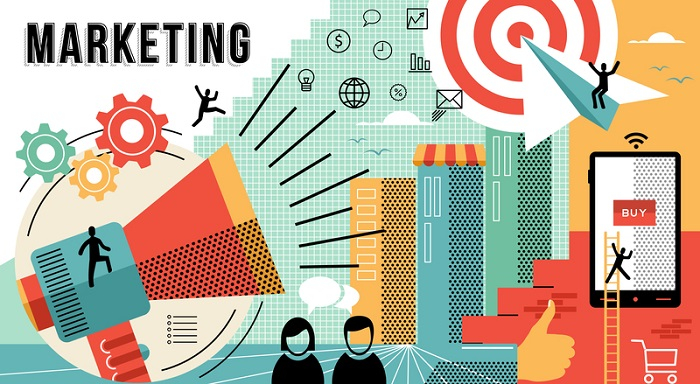
 Data Structure
Data Structure Networking
Networking RDBMS
RDBMS Operating System
Operating System Java
Java MS Excel
MS Excel iOS
iOS HTML
HTML CSS
CSS Android
Android Python
Python C Programming
C Programming C++
C++ C#
C# MongoDB
MongoDB MySQL
MySQL Javascript
Javascript PHP
PHP
- Selected Reading
- UPSC IAS Exams Notes
- Developer's Best Practices
- Questions and Answers
- Effective Resume Writing
- HR Interview Questions
- Computer Glossary
- Who is Who
What are the Steps and Importance of Trigger Marketing?
Steps To Implement Trigger Marketing
The most active type of advertising on social media networks is undoubtedly trigger marketing. Trigger-based marketing has very high success rates as it caters very directly to client demands. You may encourage client loyalty by displaying tailored adverts for products they were exploring.

Let's look at the steps to implement a good trigger marketing plan.
Be Familiar With Your Buyer Persona
Knowing your customer profile should be evident in the context of any marketing activity, but it is especially crucial for marketing automation. You may create better trigger marketing tactics to direct your target audience(s) along their path to buy if you consider the lifecycle stages, pains, and motivations of your target audience(s). In order to deliver a fantastic experience at scale, marketing automation must, in part, reach customers where they are. Because you can utilise those insights to create a powerful trigger marketing plan, gathering data early is very important.
Consider "if" And "Then" Statements
The software is easy as it views everything in black and white. However, by seeing your outcome and the way to get there as a set of if/then statements, you can reverse engineer a fantastic trigger marketing plan utilising automation.
Identify Your Trigger Events
You must locate the "trigger" in order to deliver your message to the appropriate audience at the appropriate moment. This is the "if" clause of the equation, a real-world signal that the computer programme may utilise to decide whether to carry out the desired activities. The information you have in your system and the capabilities of your marketing automation are the only limitations on trigger events.
Typical Examples Include
Activities performed on the website
The database's criteria were satisfied
Responses to emails or campaigns from the past.
For examples, you may activate an automated unsubscribe button and send the subscriber an email if they haven't opened your past four emails.
Choose the actions that your system should carry out
You may choose what occurs next after you know your "trigger" or enrolment/starting criterion. The "then" component of the equation is this.
Typical behaviours include
Emailing someone
Registering for a series
Organizing the contact's info in categories.
Construct Individualised Messages
Consumers are more likely to make a purchase after a personalised experience, according to studies. It's crucial to understand precisely how this contact differs from others in your CRM and what message will specifically appeal to them if your action ("then" statement) involves a marketing activity like email sends or campaign registration.
Think about it
What stage of their trip are they in?
How can I help them get to the next stage and offer value?
Detect and do away with Routine Marketing Tasks
Make a list of your most repeated jobs if you're still unsure about where to start with marketing automation. For example, employing automation to remove the repetitive chore of sending the same email to several people from your day would boost productivity and, consequently, performance. This will enable you to concentrate on nonautomatable, higher-impact jobs.
Boost the worth of your CRM
The CRM and data that enable your marketing automation are the only things limiting it. Marketing automation could be detrimental if your data is a mess. You won't be able to perform the sophisticated customisation and segmentation that will make a huge difference if your data is missing.
Consider this as you learn how to maximise your CRM. This involves utilising automation to categorise contacts and update CRM information in part, but ultimately you need to consider how your company utilises its CRM and ask yourself the following questions
What information about your prospects can you obtain (and when) to improve the efficacy of your campaigns?
How can automation be used to guarantee that your database is accurate and clean?
How frequently can you examine your database to ensure these efforts are legitimate?
Importance of Trigger Marketing
Trigger-based marketing is extremely important as it has many wonderful advantages. Let us look at some of those as mentioned below.
Timeliness and Relevance ? With trigger-based marketing, you may act in highly relevant ways and communicate in relevant ways at the ideal moments. Events (or triggers) can be used to start quick, automatic activities. This implies that it will reach your client or potential client at the appropriate moment. Instead of when it is most convenient for you to deliver it, they will get it when it is most pertinent and convenient for them to do so. Utilizing the channel that is most appropriate for the communication trigger can boost your prospects' receptivity and esteem for you.
Efficiency and Automation ? Your campaign may be more accurate and efficient with automation. You won't ever miss a chance to interact with your consumers or prospects if predetermined triggers start activities or communications on autopilot. Other automatic operations, such mass email dumps, cannot be customised or personalised to the same extent as specified triggers and the activities they start. Your team and you may concentrate on the creative components of your campaign rather than the tedious activities of segmenting lists, delivering messages, or updating data when your operations are automated but still extremely relevant.
Personalization and Customization ? For every stage of your client journey, trigger marketing is a terrific method to build specialised and targeted campaigns. 72% of customers believe they only interact with tailored communications, making personalization an essential part of marketing strategy. Every step of the process, from the welcome email to the post-purchase and retargeting campaigns, may be customised to your consumers' needs in order to gain their confidence.
-
Enhanced Customer Satisfaction, Loyalty, and Experience ? For success, giving customers a wonderful experience is essential. Your consumers will feel that you are taking care of their needs by sending them individualised communications that are on-point in both content and timing. Customers that feel appreciated and well-cared-for are more likely to make larger, more frequent purchases and spend more money each purchase.
Higher levels of client loyalty are a result of excellent customer service and satisfaction. Building trust with your audience via the use of trigger marketing and automation enables you to re-engage them and keep them as clients. Increased customer advocacy, a crucial component of successful digital marketing, is also a result of increased customer loyalty.
Brand awareness has increased ? At every point of the purchasing cycle, you should keep your leads satisfied and make them feel valued in order to keep them thinking about you when they're ready to make a purchase. They think of you first while recommending you to other people. In addition to direct sales, a trigger marketing strategy should focus on brand recognition and customer advocacy since they will ultimately result in increased conversion rates.
At each stage of the customer journey, nurture leads ? The greatest strategy to retain leads until conversion is to nurture them and keep them interested with pertinent, educational, and practical content at each stage of the customer journey.
Conclusion
It's crucial to abandon conventional marketing tactics in favour of something more individualised and appealing to your target audience if you want to get the greatest results. No matter what sector your firm is in, a successful trigger-marketing campaign revolves around the actions of your customers being turned into a highly-targeted communication stream that may assist offer the most lucrative outcomes.

